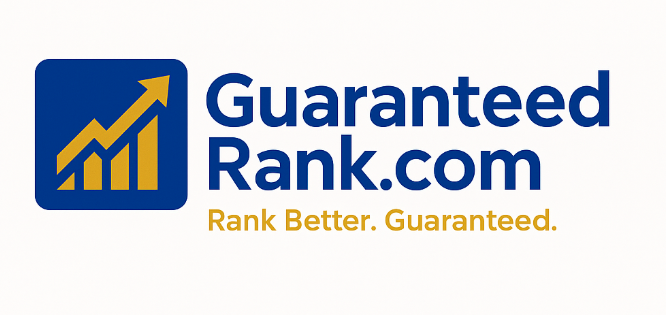Site speed is critically important for eCommerce websites for several key reasons that directly impact user experience, SEO, conversion rates, and overall business success. Here's a breakdown of why site speed matters so much for eCommerce:
1. User Experience (UX)
- First Impressions Matter: When users visit your eCommerce site, a fast-loading page creates a positive first impression, while a slow site can frustrate visitors, leading them to leave before even exploring your products.
- Navigation and Browsing: A fast site ensures users can smoothly navigate your product categories, view product images, and explore different options. Delays in page load times can cause confusion and irritate potential customers.
2. Bounce Rates and Retention
- Bounce Rate: If your pages load slowly, visitors are more likely to leave immediately. Studies show that if a page takes more than 3 seconds to load, 40% of users will abandon it. Higher bounce rates signal to search engines that users aren't satisfied with your site, which can negatively impact your rankings.
- Customer Retention: Fast-loading websites are more likely to keep visitors engaged, leading to repeat visits. Slow sites, on the other hand, can lead to customer frustration and decreased retention.
3. Conversion Rates
- Faster Checkout Process: Speed is especially important during the checkout process. Slow loading times on product pages, cart pages, or payment processing can cause users to abandon their purchase before completing it.
- Increase in Sales: For every second of delay in loading, conversion rates can drop significantly. According to some studies, a 1-second delay in page load time can reduce conversions by 7%. For eCommerce, that translates to lost sales and revenue.
4. SEO (Search Engine Optimization)
- Google's Ranking Algorithm: Google considers site speed as a ranking factor for mobile and desktop searches. A slow site will likely rank lower in search engine results, leading to less organic traffic. In contrast, fast websites tend to rank higher, resulting in increased visibility and potential customers.
- Core Web Vitals: Google’s Core Web Vitals update places particular emphasis on loading performance, interactivity, and visual stability. These metrics assess how fast and smoothly your pages load and interact with users. Poor performance can result in a penalty, causing a drop in rankings.
5. Mobile User Experience
- Mobile Optimization: A significant portion of eCommerce traffic now comes from mobile devices. Mobile users expect fast-loading sites, and slow speeds can lead to high abandonment rates. Google also uses mobile-first indexing, meaning the mobile version of your site is considered the primary version for ranking and performance purposes.
- Mobile Conversion Rates: A fast, responsive mobile site is critical for ensuring a seamless shopping experience. If your site isn’t optimized for mobile devices and loads slowly, customers are less likely to complete a purchase.
6. Competitive Advantage
- Staying Ahead of Competitors: In the competitive world of eCommerce, a faster site gives you a competitive edge over competitors with slower websites. Customers are more likely to shop from businesses that offer seamless, fast experiences.
- Customer Expectations: As more eCommerce websites improve their speed and user experience, customers come to expect faster loading times. A slow site can hurt your brand image and make customers perceive you as less professional or outdated.
7. Impact on Revenue
- Lost Opportunities: Even a slight reduction in site speed can have a measurable impact on revenue. Slow sites reduce user engagement, conversions, and overall sales. For larger eCommerce stores, the loss can be significant in terms of missed opportunities and potential sales.
- Improved ROI: By improving site speed, you can optimize your traffic-to-sales conversion, leading to a better return on investment (ROI) for paid marketing campaigns and organic traffic.
8. Customer Satisfaction and Trust
- Positive Experience: A fast site contributes to a positive customer experience, which boosts customer satisfaction and the likelihood of positive reviews, repeat purchases, and word-of-mouth marketing.
- Brand Perception: Slow sites can hurt your brand’s reputation. Customers may associate slow load times with low-quality services, which can lead to a loss of trust and negative reviews.
9. Reduced Server Load
- Efficient Resource Usage: Optimizing your site’s speed also reduces the strain on your server, improving the efficiency of the site. With less strain on your resources, you can handle more traffic, especially during peak sales times, without a performance drop.
How to Improve Site Speed for eCommerce:
- Optimize Images: Compress and resize images without compromising quality to reduce loading times, especially on product pages.
- Minimize HTTP Requests: Reduce the number of elements on each page (e.g., images, scripts, CSS) to minimize HTTP requests.
- Use a Content Delivery Network (CDN): CDNs distribute content across multiple servers globally, ensuring faster load times for visitors, regardless of their location.
- Leverage Browser Caching: Use browser caching to store static files in users' browsers, so they don’t need to be reloaded every time a user visits.
- Enable Compression: Use Gzip or Brotli compression to reduce the size of your site’s files, which can decrease loading times.
- Implement Lazy Loading: Load only visible parts of a page initially, and load the rest (images, videos, etc.) as the user scrolls.
- Use a Fast Hosting Provider: Your hosting service has a major impact on your website's speed. Ensure you're using a reliable hosting provider with a high-performance infrastructure.
Conclusion:
In eCommerce, where user engagement, conversion rates, and search engine rankings all depend on speed, a fast website is no longer optional—it's essential. Optimizing site speed can lead to better customer experiences, higher SEO rankings, increased sales, and stronger competitive positioning. It’s an investment that directly impacts the bottom line and long-term business success.











0 Comments